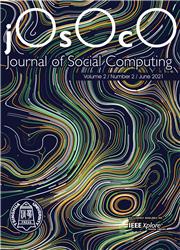Darks and Stripes: Effects of Clothing on Weight Perception
引用次数: 2
Abstract
In many societies, appearing slim (corresponding to a small body-mass index) is considered attractive. The fashion industry has been attempting to cater to this trend by designing outfits that can enhance the appearance of slimness. Two anecdotal rules, widespread in the world of fashion, are to choose dark clothes and avoid horizontal stripes, in order to appear slim. Thus far, empirical evidence has been unable to conclusively determine the validity of these rules, and there is consequently much controversy regarding the impact of both color and patterns on the visual perception of weight. In this paper, we aim to close this gap by presenting the results from a series of large-scale crowdsourcing studies that investigate the above two claims. We gathered a dataset of around 1000 images of people from the Web together with their ground-truth weight and height as well as clothing attributes about colors and patterns. To elicit the effects of colors and patterns, we asked crowd workers to estimate the weight in each image. For the analysis, we controlled potential confounds by matching images in pairs where the two images differ with respect to color or pattern, but are similar with respect to other relevant aspects. We created image pairs in two ways: firstly, observationally, i.e., from two real images; and secondly, experimentally, by manipulating the color or pattern of clothing in a real image via photo editing. Based on our analysis, we conclude that dark clothes indeed decrease perceived weight slightly but statistically significantly, and horizontal stripes have no discernible effect compared to solid light-colored clothes. These results contribute to advancing the debate around the effect of specific clothing colors and patterns and thus provide empirical grounds for everyday fashion decisions. Moreover, our work gives an outlook on the vast opportunities of using crowd sourcing in the modern fashion industry.深色和条纹:服装对体重感知的影响
在许多社会中,看起来苗条(相当于小体重指数)被认为是有吸引力的。时尚界一直试图通过设计能够增强苗条外观的服装来迎合这一趋势。时尚界普遍存在的两条轶事规则是,为了显得苗条,选择深色衣服,避免横向条纹。到目前为止,经验证据还不能最终确定这些规则的有效性,因此,关于颜色和图案对体重视觉感知的影响,存在很多争议。在本文中,我们旨在通过介绍一系列大规模众包研究的结果来缩小这一差距,这些研究调查了上述两种说法。我们从网络上收集了大约1000张人们的图像,以及他们的真实体重和身高,以及关于颜色和图案的服装属性。为了引出颜色和图案的影响,我们要求人群工作者估计每张图像中的重量。对于分析,我们通过成对匹配图像来控制潜在的混淆,其中两个图像在颜色或模式方面不同,但在其他相关方面相似。我们通过两种方式创建图像对:首先,从观察的角度,即从两个真实的图像;其次,通过实验,通过照片编辑来操纵真实图像中衣服的颜色或图案。根据我们的分析,我们得出结论,深色衣服确实会略微降低感知重量,但在统计上显著降低,与纯色浅色衣服相比,横向条纹没有明显的影响。这些结果有助于推动关于特定服装颜色和图案影响的辩论,从而为日常时尚决策提供经验依据。此外,我们的工作展望了在现代时尚行业使用众包的巨大机会。
本文章由计算机程序翻译,如有差异,请以英文原文为准。
求助全文
约1分钟内获得全文
求助全文

 求助内容:
求助内容: 应助结果提醒方式:
应助结果提醒方式:


